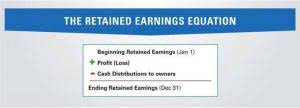T-Account: Definition, Example, Recording, and Benefits
- by xtw18387cc1f

On the other hand, credits would reduce expenses (not very common) – this could happen if you return supplies to a vendor and get a credit (reducing the expense). This is the owner’s claim on the business – basically, what’s left after you subtract liabilities from assets. This happens when you pay dividends to yourself (debiting cash) which takes money out of the business and reduces your ownership stake. This could be from investing your own money in the business (crediting cash). Once journal entries are made in the general journal or subsidiary journals, they must be posted and transferred to the T-accounts or ledger accounts.
Using T Accounts for Transactions: A Step-by-Step Guide
- It might seem strange that debits decrease revenue, but this follows the seesaw principle.
- T-accounts can display transactions from a specific time period such as a week or a month.
- Each T-account stands for a specific financial element, like cash, inventory, or accounts receivable.
- Now, interactive accounting software allows you to create and manipulate T accounts on screen.
- Analysts use T account data to assess trends, identify patterns, and make informed decisions about an organization’s financial performance.
- At Finance Strategists, we partner with financial experts to ensure the accuracy of our financial content.
So, the general journal is the original book of entries that contains the raw financial data of a business. Since services are sold on credit, the accounts receivable account increases and gets debited for $600. Revenue also increases, so the Repair Service Revenue account gets credited for $600. With that being said, the five most common types of accounts in financial accounting are assets, liabilities, expenses, revenue, and owner’s equity. Each T account carries the debit and credit entries for a different type of account, such as accounts receivable, cash, sales revenue, and so on. A T account (or general ledger account) is a graphical representation of a general ledger account.
Understand the Debit & Credit Lingo

Credits mean you’re paying off a debt (crediting cash) which reduces what you owe, making sense why it decreases the liability balance. These are t accounts the things your business owns, like cash, inventory, equipment, and buildings. Debits here make sense because they represent adding value, like buying new equipment (debit) which increases the total value of your assets.

T-Accounting meets business reality
The use and purpose of a T account is to help business owners visualize the amounts on each individual account. Splitting out debits and credits makes it easier to quickly spot things when looking at the ledger. T Accounts allows businesses that use double entry to distinguish easily between those debits and credits. For Airbnb Accounting and Bookkeeping instance, a company hires some extra temporary labor for a busy period in their factory. The accounting department later catalogs those labor payments under “operating expenses” instead of under “inventory costs” (which is where factory labor costs should go). If the labor costs are still debited and credited fully, then this type of mistake can also be difficult to catch.
- The above transaction would not only affect the Bank T account but also affect the contra account or second account, Capital.
- It is impossible to provide a complete set of examples that address every variation in every situation since there are hundreds of such T-accounts.
- Due to its simplistic nature, T-accounts are also used as a learning tool to practice transactions and double-entry accounting.
- In double-entry bookkeeping, every financial transaction impacts at least two accounts.
- Monitoring liabilities is key for metrics like the debt-to-equity ratio, which evaluates financial leverage by comparing total liabilities to shareholders’ equity.
Examples of T-Account
- Don’t worry, T accounts aren’t about to be replaced by robots (at least not entirely).
- The balances in T accounts are aggregated to create the balances needed for financial statement preparation.
- The T-account is a quick way to work out the placement of debits/credits before it’s recorded in full detail to help avoid data entry errors.
- Each account has its T account, where transactions are recorded to track increases and decreases in balances.
- In today’s dynamic business environment, stakeholders demand comprehensive insights to drive strategic decisions and optimize performance.
- T-accounts are used to visualize the balances of individual accounts.
The top of the T is where you write the account’s name, like ‘Cash’ or ‘Revenue’. Now, the left side of the T is for debits, and the right side is for credits. It’s a visual way to see how transactions affect different accounts.

Liabilities

For example, when a company purchases equipment for $50,000, the equipment account is debited to reflect the asset increase. Depreciation, calculated using methods like the Modified Accelerated Cost Recovery System (MACRS), reduces the asset’s book value over time. Accurate asset retained earnings tracking is critical for financial metrics like the current ratio, which compares current assets to current liabilities to assess liquidity.
Our goal is to deliver the most understandable and comprehensive explanations of financial topics using simple writing complemented by helpful graphics and animation videos. This team of experts helps Finance Strategists maintain the highest level of accuracy and professionalism possible. At Finance Strategists, we partner with financial experts to ensure the accuracy of our financial content. 11 Financial is a registered investment adviser located in Lufkin, Texas. 11 Financial may only transact business in those states in which it is registered, or qualifies for an exemption or exclusion from registration requirements. Each article on AccountingProfessor.org is hand-edited for several dimensions by Benjamin Wann.
Examples
These examples show the basics of using T-accounts to record transactions. For more examples and detailed explanations, check out our section on journal entries examples. Mastering these basics is crucial for anyone wanting to get a grip on double-entry accounting and keep their financial reporting spot-on.
On the other hand, credits would reduce expenses (not very common) – this could happen if you return supplies to a vendor and get a credit (reducing the expense). This is the owner’s claim on the business – basically, what’s left after you subtract liabilities from assets. This happens when you pay dividends to yourself…